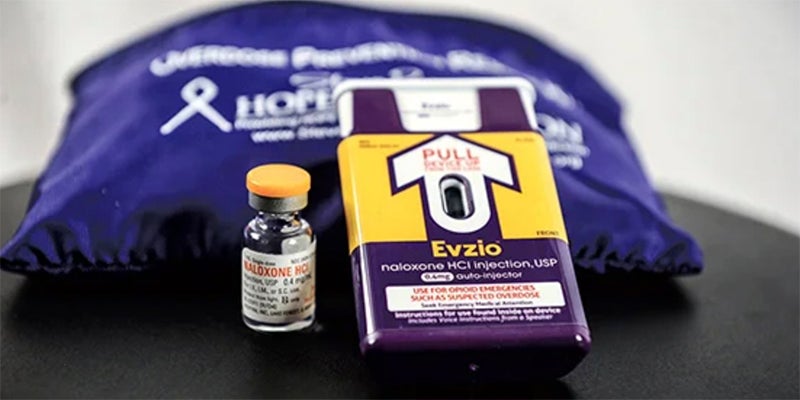Walz calls for more resources to prevent opioid overdose deaths, including Naloxone access
Published 5:46 pm Tuesday, February 27, 2024

- An injector of naloxone which can be administered through clothing to battle a heroin overdose. Herald file photo
|
Getting your Trinity Audio player ready...
|
By Estelle Timar-Wilcox
At a roundtable discussion on the opioid crisis on Monday, Gov. Tim Walz said he wants to put more resources towards overdose prevention this year.
“This is a crisis that has not been talked about enough,” Walz said. “It’s pretty hard now to not find that it touches our families, our friends, our neighbors across the state.”
Leaders of local organizations at the roundtable said they need more resources. They’re looking for ways to expand on last year’s work. Last session, the legislature committed more than $200 million to addiction and recovery services over the next four years.
Overseeing that response is a new state office, headed by Addiction and Recovery Director Jeremy Drucker. He said the state is investing in more localized responses: the Department of Health is distributing millions in grants starting this year to community organizations and local projects.
Money is set aside for culturally specific strategies. It could go towards education, Naloxone access, mental health resources and a variety of other strategies meant to keep people safe, focused in religious or cultural groups.
“Substance use disorder and the opioid epidemic affects every individual and every community differently, and we really, truly need to meet people where they’re at,” Drucker said. “That means meeting communities where they’re at.”
It’s a newer approach to addressing the crisis. Antony Stately, the president of the Native American Community Clinic in south Minneapolis, said it’s a better strategy than punishing people for substance use.
“Treating opioid addiction as a substance use problem solely over the last couple of decades has not served us very well as a nation,” Stately said. “The problem has gotten bigger, more challenging, and very, very difficult to manage. So taking a public health approach is really important.”
Leaders of other community organizations agreed. They said they’re focusing on education in schools and religious communities aimed at reducing stigma around seeking help and talking about addiction.
Shakopee Police Chief Jeff Tate said he’s seen that shift in thinking in law enforcement, too. He favors deflection and diversion programs, which focus on keeping people away from substance use — and out of jail — by connecting them to services.
“If you would have said ‘deflection and diversion’ in front of a bunch of public safety leaders ten years ago, you get a much different reaction than you get today,” Tate said. “We recognize we’re not going to be able to arrest our way out of this.”
Minnesota U.S. Rep. Angie Craig weighed in from the national perspective. Craig, a Democrat who represents the state’s second district, has pushed legislation for additional money for overdose prevention, and access to over-the-counter Naloxone.
She said that she wants to see more attention on the crisis in congress and wants to invest more in resources at the southern border of the U.S. to screen for fentanyl products coming into the country.
“We have not been treating this as the public health crisis that it is,” Craig said. “I have started working this conversation in almost every other conversation that I have as a member of Congress, because the challenges are just so immense.”
Walz said he’s waiting until he sees the state’s budget forecast — likely later this week — to work out specific proposals on the issue. But he’s looking to invest more in overdose prevention this year.
“Moving this money as quickly as possible from state government down to local agencies and nonprofits and in our communities is the right way to do it,” he said.





